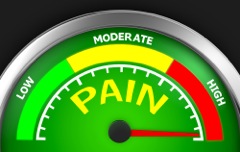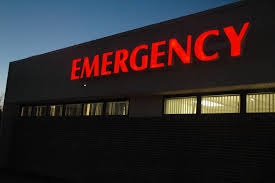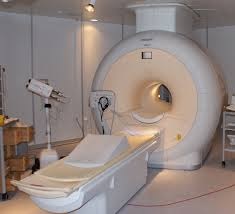 As our population ages, many people need short-term rehabilitation as they transition from the hospital to home. This post-hospital period can be challenging. However, the transition can be much easier if the patient is cared for in a sub-acute rehabilitation setting with close supervision from physicians, nurses, therapists, social workers and other specialists.
As our population ages, many people need short-term rehabilitation as they transition from the hospital to home. This post-hospital period can be challenging. However, the transition can be much easier if the patient is cared for in a sub-acute rehabilitation setting with close supervision from physicians, nurses, therapists, social workers and other specialists.
Whether a patient has had an elective surgery or an unplanned hospitalization, pain management is often the determining factor in the success or failure of these outcomes.
In general, the first two weeks after injury are the most intense from a pain standpoint and are crucial for optimal pain management. Patients may need pain medications, often narcotics, in order to maximize their therapy.
Improving therapy progress and minimizing comorbidities such as pneumonia and/or skin breakdown are focal points of sub-acute rehab. Comorbidities happen when patients are too sedentary because pain limits mobility.
Luckily, most patients are able to significantly cut back on their pain medications and many no longer need pain management after six-to-12 weeks. Most people return to their previous activity level by about six weeks. In most cases, a narcotic given at the beginning of rehab allows the patient to actually do more and go home more quickly.
There are several myths regarding narcotics, which make patients hesitant to take these pain medications. One of the biggest worries is the concern for addiction. While narcotic addiction is a very serious issue, narcotic use can be safe in an environment supervised by a physician trained in pain management.
In sub-acute rehabilitation, narcotics are used as a short-term medication to get over a specific injury with the goal of weaning off the drugs as soon as appropriate. Careful screening is considered when prescribing narcotics.
 Patient history, physical exam, side effects of medications, history of any personal or direct family addictions are all evaluated. Where addiction has been present, patients will need more education and other pain management techniques to avoid further addiction potential.
Patient history, physical exam, side effects of medications, history of any personal or direct family addictions are all evaluated. Where addiction has been present, patients will need more education and other pain management techniques to avoid further addiction potential.
As board-certified Physical Medicine and Rehabilitation (PM&R) physicians, Drs. Bleiberg and Ruiz monitor patients constantly to ensure minimal side effects. Our team also discusses cases with the patient and, if desired, family members to ensure they are getting the maximum benefit from medication and therapy.
Left to their own choices, many elderly patients will fall behind in their pain medication cycle, limiting their progress in therapy. Combined with a change from their normal environment and uncontrolled pain, worsened dementia is also seen frequently in this population. Often, the patient cannot distinguish between pain and other aging issues (loneliness, depression or failure to complete basic tasks in a timely fashion). When patients are in pain, everything comes to a grinding halt; movement becomes extremely limited. Pain medications are sometimes necessary to allow for a maximum effect on patients when they are moving, allowing progress in therapy.
When we talk about pain, we must always distinguish between neuropathic pain (pain coming from nerve damage) and nociceptive pain (pain from the injury or surgery). Nerve pain does not always require a narcotic, so a history from the patient is critical in determining the correct medication.
A thorough physical exam is also key, as important findings often arise. For example, a thorough exam of a patient complaining of rib pain may lead to finding a rash, resulting in a diagnosis of shingles rather than suspected rib fractures. In a case like this, shingles pain responds better to a nerve pain medication rather than a narcotic.
Another important factor to remember is that just taking pain medications doesn’t mean a patient will be completely pain free.
Pain management is based on the condition and is best managed by a pain specialist, often times a rehab doctor or a physiatrist. Physical Medicine and Rehabilitation (PM&R) physicians, also known as physiatrists, treat a wide variety of medical conditions affecting the brain, spinal cord, nerves, bones, joints, ligaments, muscles and tendons. Physiatrists maximize what a patient can do and in coordination with therapy, assist the patient in adapting to what they cannot.







